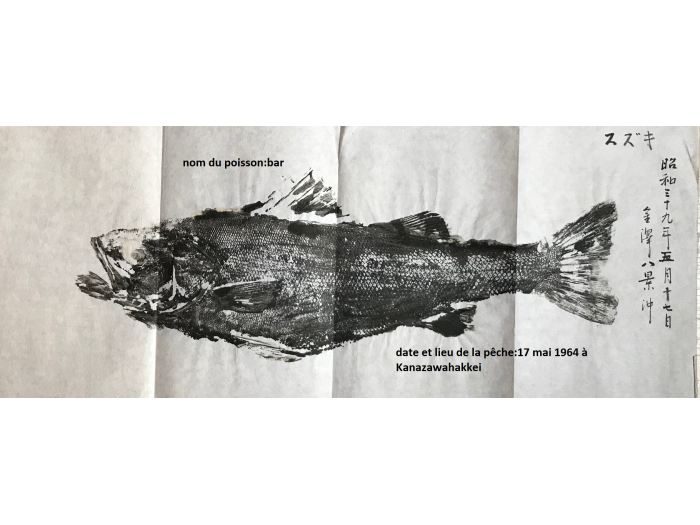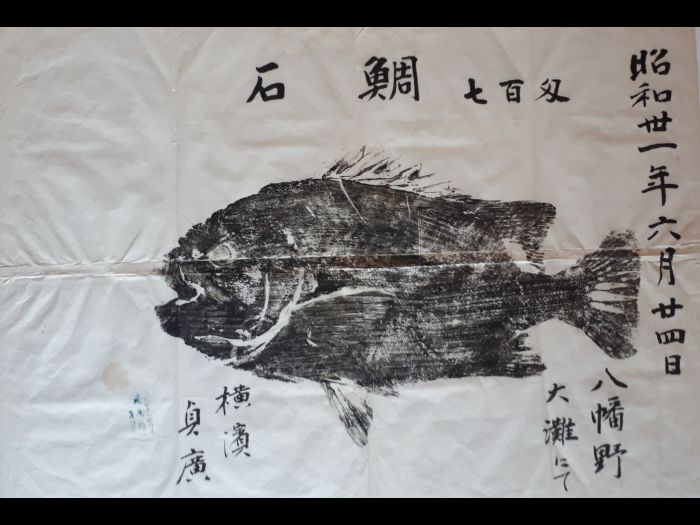Gyotaku (魚拓, Gyo : fish and Taku : prints, traces) originally consisted in making the print of a fish on a soft support such as rice paper.
The technique has a long Asian tradition even if the most famous oldest prints date back from 1862. It was first used by Japanese fishermen to commemorate their catch especially when it was outstanding or during a contest organized by samurais.
On the print the fisherman would indicate his name, the name of the fish, its weight, the date and place.
Direct Method It is an evolution of the traditional method mainly by the introduction of color. the fish is painted with watercolor or acrylic or oil paints and the imprint is taken by applying a rice paper (washi) or cloth on the fish. It is a way of working very fast. The maximum time to paint the fish and take the impression is 40 minutes. It requires a work of preparation of the fish and the result always has a part of hazards. The rendering is very spontaneous. . The leader of this school is the Master Masatsu Matsunaga. His association Takuseikai (http://takuseikai.com/) carries his messages, the most important of which are - apart from the eye, we do not retouch an impression once. taking -the direct method is the only one that respects Japanese tradition |
Indirect method: Developed by master Koyoo Inda in the 1940s, it corresponds to a fish adaptation of a technique widely used in Asia: the impression by rubbing..It consists in preparing the fish and covering it with a supple support and to apply the colors with the help of tampons by gently tapping to reveal the details of the fish. The principle of this technique is simple and known to take footprints of bas reliefs for example, leaves, coins. However, it is much longer than the direct method, but there is no uncertainty in the rendering. Several Japanese masters contribute a lot to the development of this method: Boshu Nagace, Shisyu Fujita, Yamamoto Mineo, Rytara Ono |







